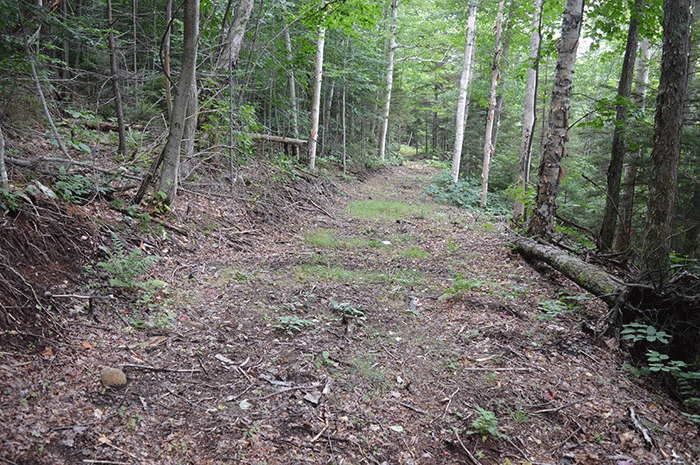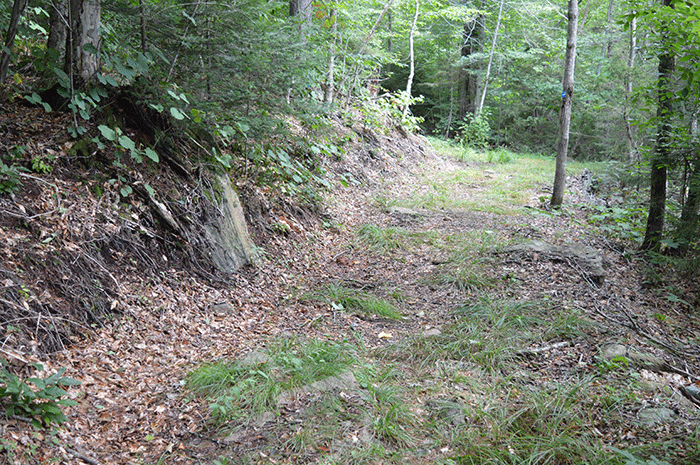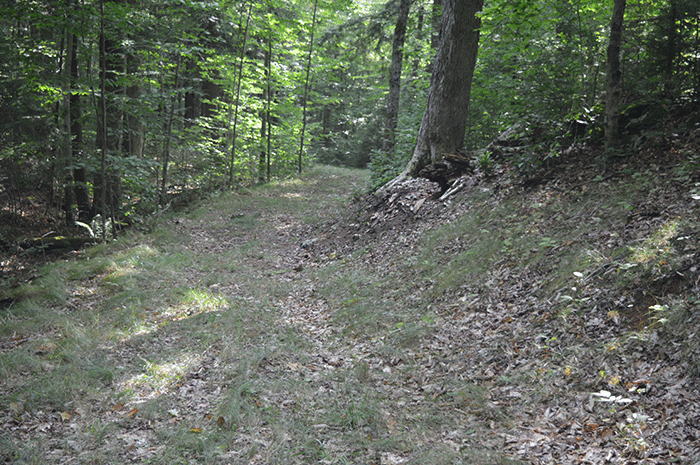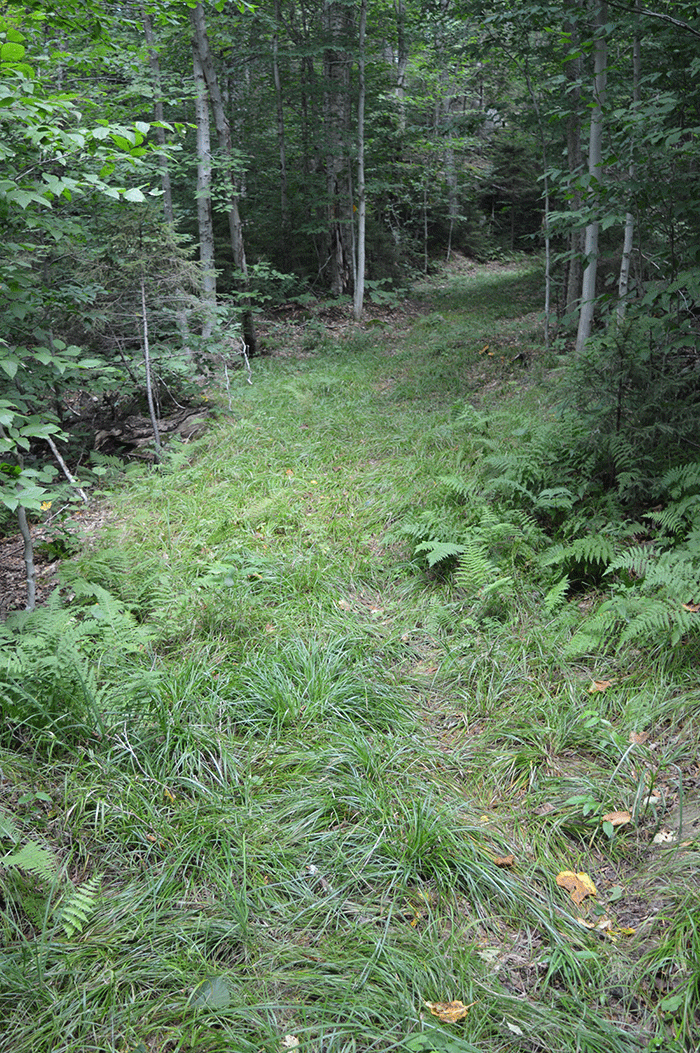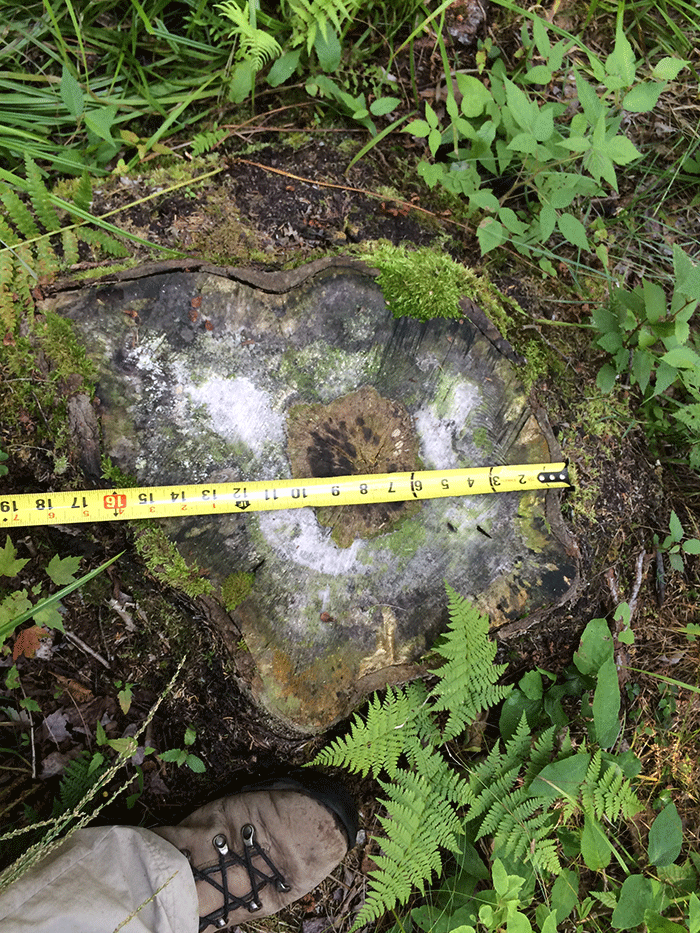In 2013, Protect the Adirondacks started a lawsuit to challenge the constitutionality of the construction of 9-12 foot wide class II community connector snowmobile trails across the Adirondack Forest Preserve. For many reasons, PROTECT saw these trails as violating Article 14, Section 1, the “forever wild” provision of the State Constitution due to the vast number of trees being cut and the immense alteration of the Forest Preserve to build these road-like trails.
To date, the Adirondack Park Agency (APA) and Department of Environmental Conservation (DEC) have completed, started or planned over 36.5 miles of these road-like trails resulting in clearing of between 40-53 acres of forest lands and the destruction of over 31,000 trees. It is PROTECT’s position that these actions violate Article 14.
On August 31, 2016, Protect the Adirondacks and the State of New York submitted filings for Motions for Summary Judgment in State Supreme Court in Albany. These papers enumerate the positions of each side on the constitutionality of the state’s network of class II community connector snowmobile trails and their impacts on the Forest Preserve.
Here are the filings on behalf of Protect the Adirondacks:
Claudia Braymer, Caffry & Flower Law Office, Memorandum of Law
Notice of Motion
John Caffry, Caffry & Flower Law Office, Affidavit
Dr. Philip Terrie, historian, Affidavit
Steve Signell, forest ecologist, Affidavit
Peter Bauer, Protect the Adirondacks, Affidavit
Here are the filings on behalf of the State of New York
Loretta Simon, NYS Office of Attorney General, Notice of Motion
Loretta Simon, NYS Office of Attorney General, Memorandum of Law
Loretta Simon, NYS Office of Attorney General, Affidavit Part 1
Loretta Simon, NYS Office of Attorney General, Affidavit Part 2
Loretta Simon, NYS Office of Attorney General, Affidavit Part 3
Loretta Simon, NYS Office of Attorney General, Affidavit Part 4
Loretta Simon, NYS Office of Attorney General, Affidavit Part 5
Kathy Regan, NYS APA, Affidavit
James Sessions, NYSDEC, Affidavit
Keith Rivers, NYSDEC, Affidavit
Peter Frank, NYSDEC, Affidavit
Daniel Levy, NYSDEC, Affidavit
Josh Clague, NYSDEC, Affidavit
Tate Connor, NYSDEC, Affidavit
Timothy Howard, NYSDEC, Affidavit
Maxwell Wolkenhauer, NYSDEC, Affidavit
Both sides will respond to these submissions in late September and both sides will file replies to those responses in late October.
The State Supreme Court judge will rule on these Motions for Summary Judgment on whether or not to go to trial on this action and what issues will be the subject of a trial.
The papers submitted by both sides argue differing interpretations of the meaning of Article 14, Section 1 of the State Constitution. Article 14 states: “The lands of the state, now owned or hereafter acquired, constituting the forest preserve as now fixed by law, shall be forever kept as wild forest lands. They shall not be leased, sold or exchanged, or be taken by any corporation, public or private, nor shall the timber thereon be sold, removed or destroyed.” Central to conflicting interpretations of Article 14 is the meaning of “forever kept as wild forest lands” and what the framers of the constitution meant by use of the word “timber.” Was “timber” only large and merchantable trees or did it mean the entire forest? Can the Forest Preserve be changed for public recreational management and opportunities and if so what changes are permissible?
PROTECT’s action is the most important lawsuit on the meaning and applicability by state agencies in their management of the Forest Preserve of the forever wild provision since the Association for the Protection of the Adirondacks v MacDonald in 1930, which famously was ruled upon by the Appellate Division, Third Department and the New York State Court of Appeals. In 1993, there was another Article 14 lawsuit Balsam Lake Anglers Club v the Department of Environmental Conservation. These two lawsuits have informed interpretations of Article 14, but also contain some ambiguities.
Throughout the history of Article XIV there have been many constitutional amendments to change it. These amendments have authorized creation of ski areas at Whiteface, Gore and Belleayre Mountains, highways, reservoirs, and power lines, among other uses, in the Forest Preserve or swapping lands for a cemetery, Great Camp Sagamore, a landfill, an airport runway, a municipal water supply well, among other activities. Constitutional amendments to Article 14 has been used more than 18 times to resolve major issues facing the management of the Forest Preserve. One thing where there is widespread agreement is that Article 14 sought to remove control for major decisions on the future of the public Forest Preserve from bureaucrats ruling by administrative fiat and give it to the people of the State of New York. It’s a covenant between the governing bodies and the governed that has worked well and provided immense public benefits for 120 years. PROTECT believes that the current class II community connector trail system can only be built and authorized through a constitutional amendment.
This summer, PROTECT has gone to court to try and stop tree cutting to build these new road-like trails by the DEC until this lawsuit is resolved. To date the DEC has cut over 15,000 trees and another 8,000 could be cut this year. The Appellate Division ruled twice to stop tree cutting, once for 25 days in July and August 2016, and another time in mid-August. The State Supreme Court denied PROTECT’s motion for a preliminary injunction against further tree cutting until this case is resolved, and this denial is currently being appealed. Currently, the Appellate Division’s second order has halted tree cutting on the Forest Preserve.
Here are pictures of one of the major class II community connector trails that is a part of this lawsuit. These were taken in the summer of 2016 along the 11.6-mile Seventh Lake Mountain trail, connecting the Sagamore Road in Raquette Lake to the Moose River Plains Road about 2.5 miles east of the Limekiln Lake Road. This “trail” in the Moose River Plains Wild Forest area was built in 2012 and four years later shows many of the enduring impacts that will be long-lasting and have changed that part of the Forest Preserve.
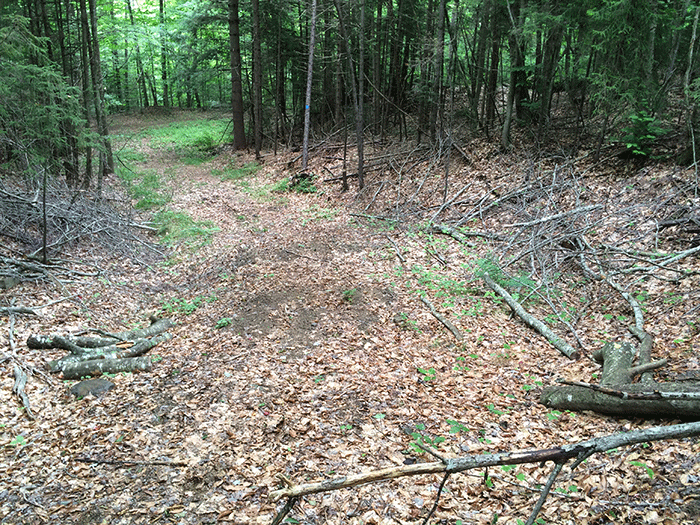
The pictures above were all taken during the summer of 2016 from various locations along the 11.6-mile Seventh Lake Mountain Trail built in 2012 in the Moose River Plains Wild Forest area. Starting from the top, the first three pictures show extensive bench cuts several feet high made with heavy machinery that also graded and flattened the trail surface by removing boulders and stumps. The fourth picture shows where a grass mix was planted in an open canopy area and the trail has turned into a grass field. Nearly 3,000 large trees were removed along this trail, such as the 15 inch maple stump shown above, as well as thousands more of small trees. Debris, as such as above, still clutters the trail sides in many places. In no way, shape or form do class II community connector snowmobile trails bear any meaningful resemblance to a foot trail. The level of tree cutting and terrain alteration violate Article 14, Section 1, the forever wild provision, of the State Constitution.

